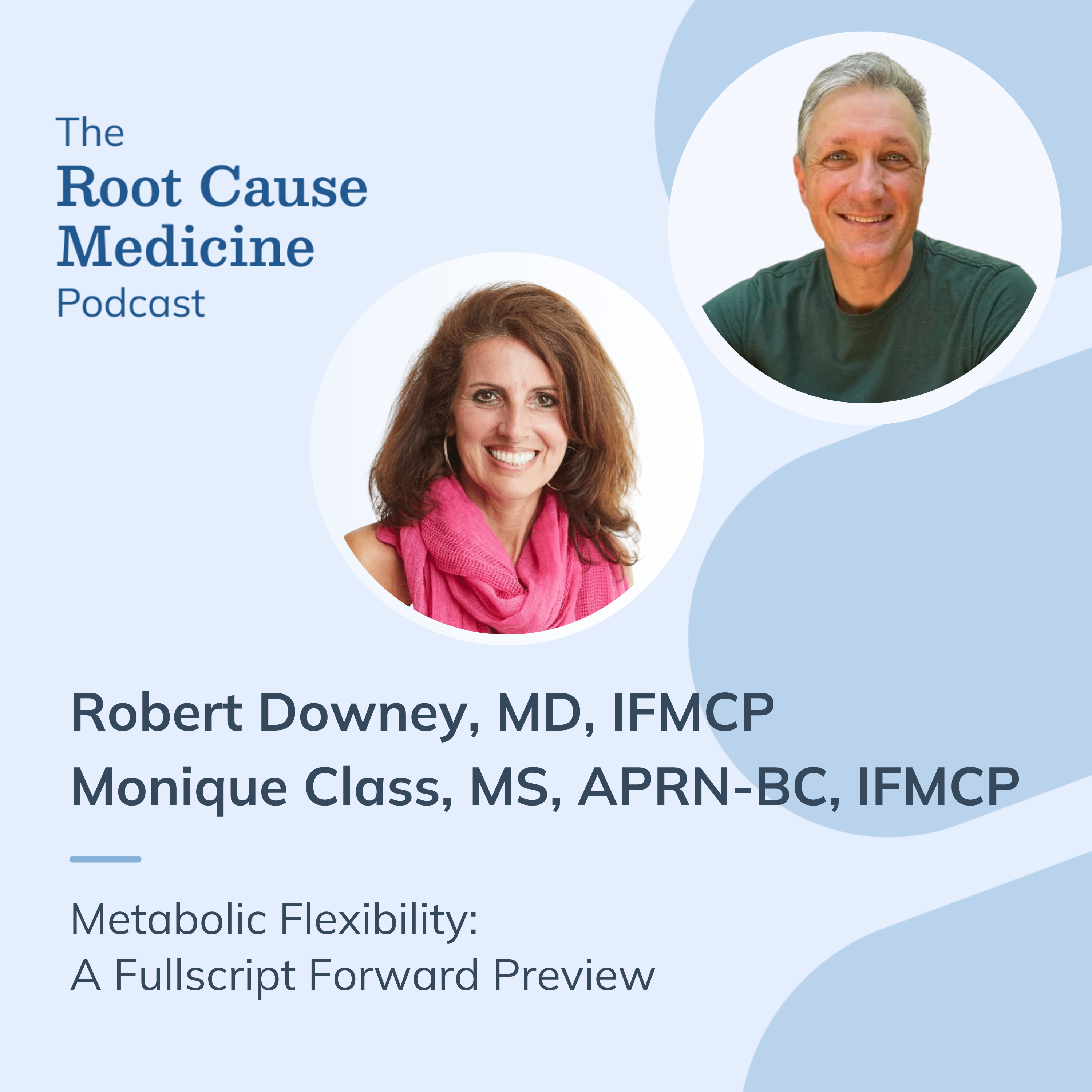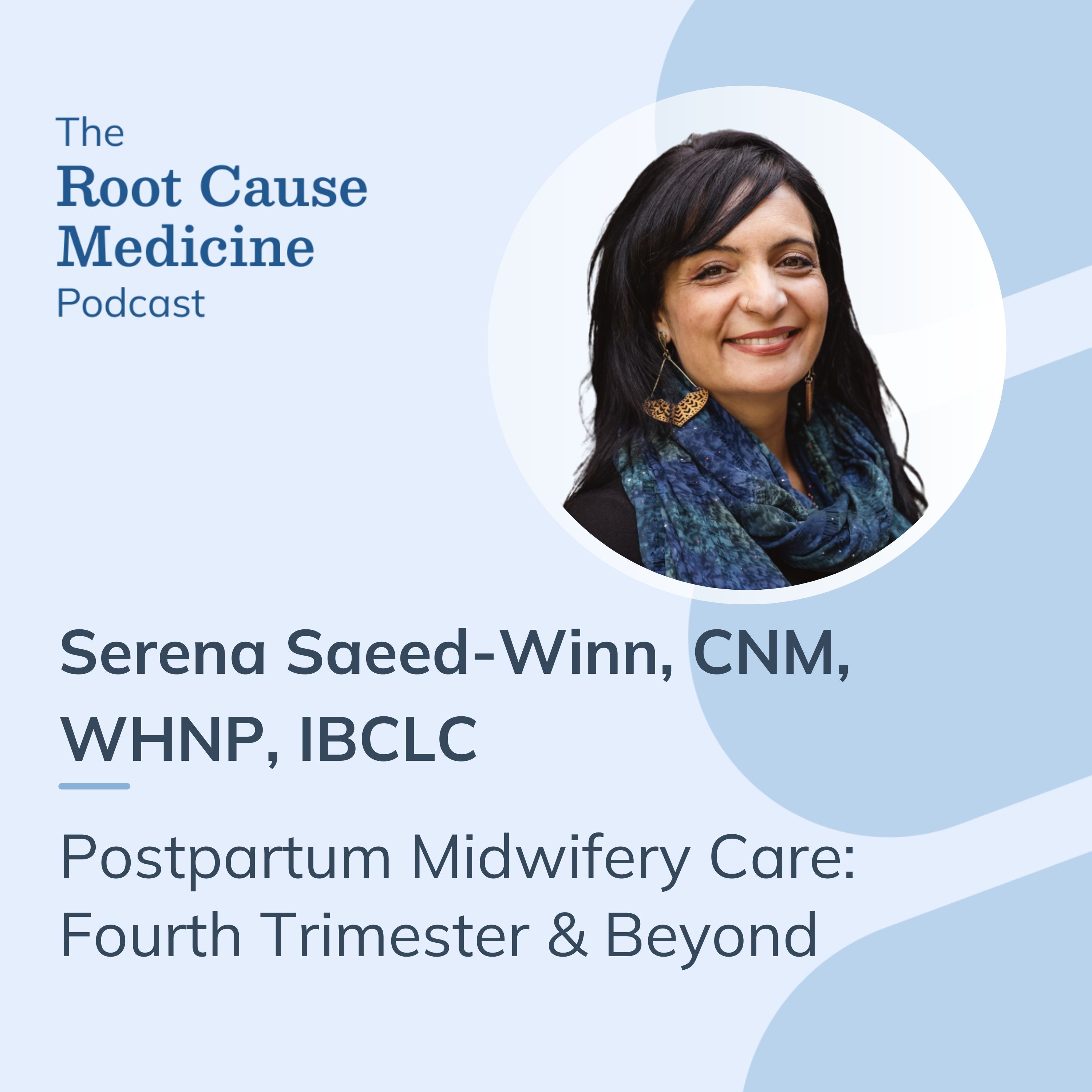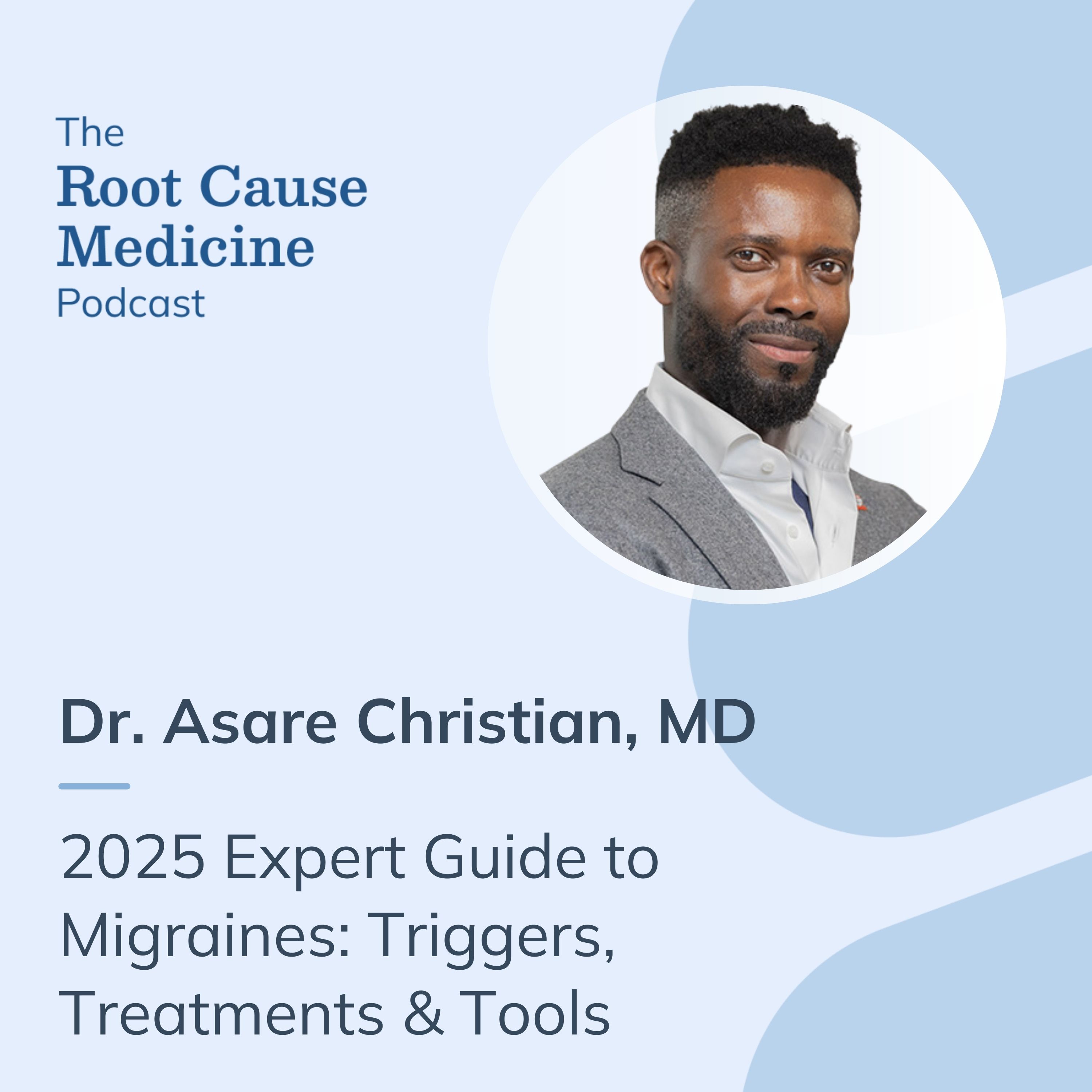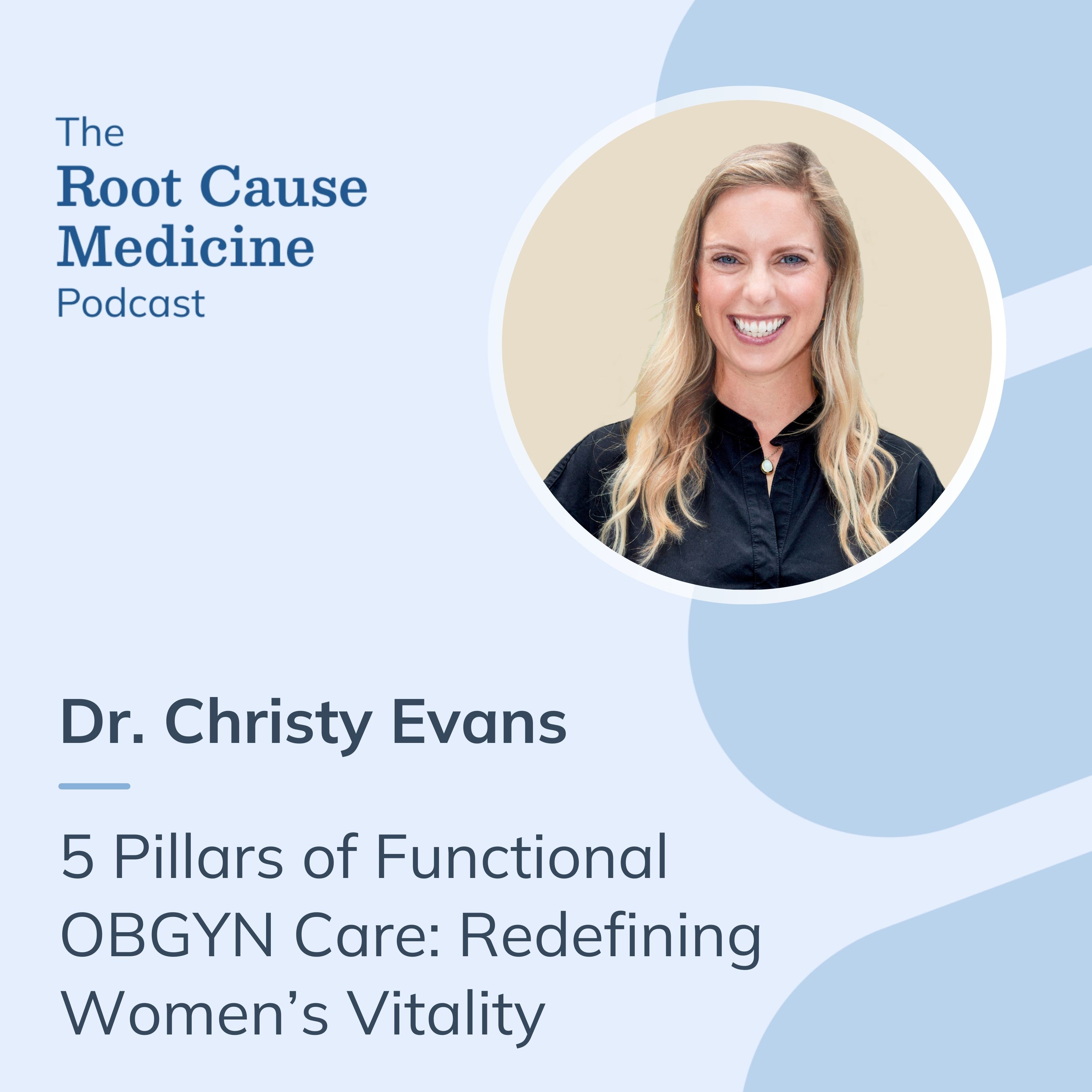Approximately 25% of people worldwide experience anemia, a condition where there are fewer red blood cells or lower hemoglobin levels than normal. Iron deficiency is the most common nutritional deficiency and is linked to about 50% of all anemia cases. Iron is important for the body because it helps with growth, brain development, making hormones, and creating hemoglobin. When there isn't enough iron, a type of anemia called microcytic anemia can happen, which might make people feel tired, weak, or have trouble with exercise. (3, 4)
Since iron deficiency anemia is the most common type, it's important to consider it when diagnosing anemia. This article will discuss how iron deficiency anemia develops, signs and tests that can help identify it, and ways to support health through an integrative approach.
[signup]
What is Iron Deficiency Anemia?
Iron deficiency anemia (IDA) is the most common microcytic anemia, where red blood cells (RBCs) are smaller than usual because the body doesn't have enough hemoglobin. Hemoglobin, which carries oxygen in RBCs, needs iron to be made properly. Without enough iron, the body can't make enough hemoglobin and RBCs, leading to IDA. (7)
Iron deficiency can happen due to blood loss, not eating enough iron-rich foods, or not absorbing iron well. The following groups may have a higher chance of developing IDA (1):
- People with heavy menstrual periods, who are pregnant, or breastfeeding
- People who have had major surgery or physical injuries
- People with digestive issues that affect iron absorption, like Celiac disease and inflammatory bowel disease (IBD)
- People who don't eat enough iron-rich foods, such as vegetarians and vegans
Other possible causes of IDA include (7):
- Low stomach acid (hypochlorhydria)
- Digestive infections: Helicobacter pylori, small intestinal bacterial overgrowth (SIBO)
- Chronic digestive bleeding from ulcers, hemorrhoids, frequent use of certain pain relievers, and some cancers
- Frequent blood donations
Iron Deficiency Anemia Symptoms
The symptoms of iron deficiency and IDA are similar, and how severe they are usually depends on how much iron is lacking. When the body doesn't get enough oxygen due to IDA, it can affect many parts of the body, leading to symptoms that might be mistaken for other issues (1):
- Feeling anxious
- Being sensitive to cold
- Feeling down or depressed
- Feeling dizzy
- Having trouble with exercise
- Feeling very tired
- Getting headaches
- Feeling irritable
- Having weak muscles
- Craving non-food items (pica)
- Having restless legs syndrome (RLS)
Iron is also important for making thyroid hormones, and not having enough iron can be linked to hypothyroidism. Both conditions share many symptoms:
- Trouble thinking clearly (brain fog)
- Brittle nails
- Sensitivity to cold
- Constipation
- Feeling down or depressed
- Feeling very tired
- Losing hair
- Irregular periods
- Swelling or fluid retention
- Gaining weight
Iron also helps with collagen production. When iron is low, these symptoms might appear:
- Brittle nails
- Cracks at the corners of the mouth
- Dry, pale skin
- Losing hair
- An inflamed tongue
Functional Medicine Labs to Diagnose Iron Deficiency Anemia
A complete blood count (CBC) is a test that looks at the size, shape, and color of red blood cells. The table below shows results that might suggest microcytic anemia:

A complete iron panel includes several blood tests specific to iron. Together, these tests can give a detailed picture of iron levels and help distinguish between different types of anemia.
- Serum iron measures the total iron in the blood. It is often low in iron deficiency and IDA.
- Ferritin is a protein that stores iron in the liver and is a key marker for checking the body's iron reserves. Low levels suggest a more advanced stage of iron deficiency.
- Transferrin is a protein that carries iron throughout the body; it usually increases when iron levels are low.
- Transferrin saturation, or % Sat, shows how much transferrin is carrying iron. It is often lower in IDA.
- Total iron binding capacity (TIBC) indicates how much iron can be bound to transferrin. It tends to be higher when iron is low.
- Unsaturated iron binding capacity (UIBC) is the transferrin not carrying iron. It is often higher in IDA.

The reticuloendothelial system (RES), or iron recycling system, helps manage iron levels in the body. If the RES isn't working well, even normal serum iron and ferritin levels might not be enough to move iron where it's needed. In cases of vitamin A and copper deficiency, RES function can be affected, leading to iron deficiency. Checking vitamin A and copper levels might be helpful when iron levels seem normal, but symptoms of anemia are present, and tests show unusual TIBC and % Sat levels. (8, 9)
Tests to Rule Out Root Cause of Iron Deficiency
After diagnosing IDA, it's important to find out why iron levels are low. A detailed medical history, including diet and medications, can provide clues about lifestyle factors affecting iron levels.
Testing might also be needed to find the root cause:
- Serum hCG to check for pregnancy
- A fecal occult blood test (FOBT) to check for blood in the stool, which might indicate intestinal bleeding
- Blood tests for genetic and immune markers common in Celiac disease and IBD to rule out digestive conditions affecting absorption
- Hormonal imbalances can cause heavy menstrual bleeding. A urinary hormone panel can measure estrogen, progesterone, and testosterone levels. Progesterone deficiency and estrogen dominance, alone or in combination, are common causes of heavy periods.
- A comprehensive Helicoplyori pylori stool test can diagnose an H. pylori infection. It also includes virulence factors and antibiotic resistance testing that guide treatment recommendations.
- SIBO breath test
Imaging and endoscopic procedures are required to diagnose hypochlorhydria, Celiac disease, and IBD.
Functional Medicine Treatment for Iron Deficiency Anemia
Iron Repletion
Addressing the underlying cause of iron deficiency and replenishing iron stores through supplementation can be part of managing IDA (4).
Adults with iron deficiency anemia may need 120 mg of elemental iron daily for at least three months. It's important to follow up with repeat CBC and iron testing after one month to check the response. Continuing therapy for one to three months after hemoglobin levels normalize can help replenish iron stores. (5)
There are different forms of iron in supplements. Common and affordable ones contain iron salts like ferrous sulfate, but they might cause stomach upset. Some practitioners suggest ferrous (bis)glycinate as a gentler option. (2)
Here are some ways to potentially enhance iron absorption from supplements (2, 6, 7):
- Take iron supplements between meals
- Avoid taking iron with foods or supplements that might reduce absorption, like those containing phytates, polyphenols, tannins, calcium, soy, and oxalates
- Take iron with vitamin C to help with absorption
Some studies suggest that taking iron every other day might be as effective as daily dosing for increasing iron levels. This might be a good option for those who have trouble with daily iron supplements.
Intravenous (IV) iron can be distributed more quickly than oral supplements. IV infusions might be preferred for those who can't tolerate oral iron, have digestive issues affecting absorption, or aren't responding to oral iron as expected. (4, 6)
In severe cases, blood transfusions might be needed. There isn't a set guideline for when to do this, but the patient's condition and symptoms are important factors. (5)
Nutrition
Iron in food comes in two main forms: heme and nonheme. Heme iron, found in animal products, is absorbed well by the body. Nonheme iron, found in plants and fortified foods, is less easily absorbed. Good sources of animal iron include red meat, oysters, liver, and chicken. Plant sources include dark leafy greens, legumes, molasses, and tofu. (3)
Here are some tips for cooking to help with iron absorption:
- Use cast iron pans for cooking
- Soak beans and legumes before cooking to remove substances that might block iron absorption
- Pair iron-rich foods with vitamin C sources like citrus fruits, strawberries, bell peppers, and cruciferous vegetables
- Avoid eating iron-rich foods with calcium, tannins, phytates, polyphenols, and oxalates
Herbs & Supplements
Consider vitamin A and copper supplements to support the iron recycling system, especially if deficiencies are found.
This article doesn't cover specific treatment plans for conditions causing IDA. However, addressing these conditions is important for managing IDA and preventing future iron deficiency. Practitioners often use a mix of herbs, supplements, diet changes, and sometimes medications to address these health concerns.
Lifestyle Modifications
Endurance athletes might have a higher risk for IDA. Intense exercise can increase the body's need for iron due to losses through sweat, reduced absorption from exercise-related inflammation, and increased red blood cell breakdown. Some research suggests that high-intensity exercise can increase iron loss by up to 70% compared to less active people. Reducing exercise intensity and frequency during IDA treatment might help improve response to iron therapy. Athletes might need more dietary and supplemental iron to meet increased demands. (10)
Summary
Iron is an important mineral for the body, partly because it helps make hemoglobin and red blood cells. When iron is low, microcytic anemia can occur, leading to symptoms related to iron deficiency anemia. Practitioners trained in functional medicine use comprehensive testing to understand iron levels and metabolism. An integrative approach, including nutrition, supplements, and lifestyle changes, can help restore the body's iron and red blood cell balance.












%201.svg)






